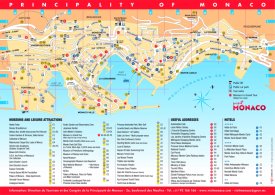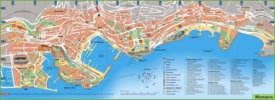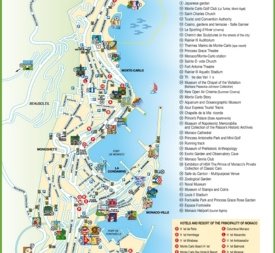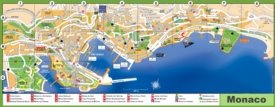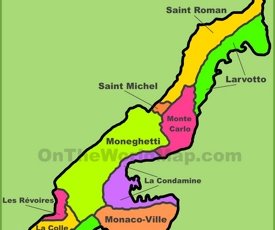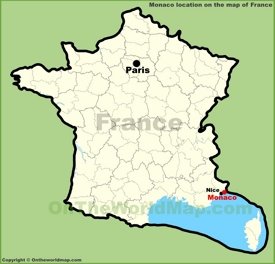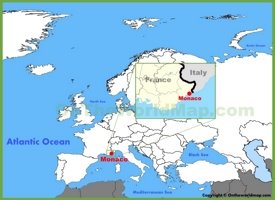Monaco Map
Description:
This map shows governmental boundaries of countries, wards, and wards boundaries in Monaco.
Size: 1200x1360px / 245 Kb
Author: Ontheworldmap.com
You may download, print or use the above map for educational, personal and non-commercial purposes. Attribution is required. For any website, blog, scientific research or e-book, you must place a hyperlink (to this page) with an attribution next to the image used.
Description:
Author: Ontheworldmap.com
Map based on the free editable OSM map openstreetmap.org.
Online Map of Monaco
Detailed Maps of Monaco
About Monaco
Monaco is a microstate on the French Riviera, near the Italian region of Liguria, in Western Europe, on the Mediterranean Sea. It is a semi-enclave bordering France to the north, east, and west. With an area of 0.8 square miles (2.08 square kilometers), Monaco is the second-smallest sovereign state in the world after the Vatican City. More than thirty-nine thousand people live in the Principality, of whom only 9,500 are citizens of Monaco. Its population of 39,000 and small area make it the most populous sovereign state in the world. Monaco is regarded as one of the world's wealthiest and priciest locations.

The official language is French; many residents speak and understand Monegasque, English, and Italian. Monaco consists of nine administrative districts, the largest of which is Monte Carlo, known for its luxury casinos, particularly the Casino Monte Carlo. The principality's capital is Monaco-Ville. The Principality is widely known for the annual round of the Formula 1 championship held here, the Monaco Grand Prix. The Prince's Palace of Monaco, the official residence of the ruling Grimaldi family, is a historical landmark with guided tours.


Monaco's economy relies heavily on tourism, banking, and financial services. Rich inhabitants and businesspeople from all over the world are drawn to the area by its high level of living, lack of income tax, security, and exclusivity.
Photos of Monaco from personal archive:





The Facts:
| Capital: | Monaco-Ville |
| Area: | 0.8 sq mi (2.08 sq km) |
| Population (2022): | ~ 39,050[1] |
| Official language: | French |
| Currency: | Euro (€) (EUR) |
| Driving side: | right |
| Calling code: | 377 |
| Internet TLD: | .mc |
| Time zone: | UTC+1 (CET) Summer (DST) UTC+2 (CEST) |
| Gross domestic product 2015 (PPP): |
|
| Gross domestic product 2019 (nominal): |
|
Quartiers: Monaco-Ville, La Condamine, Monte Carlo and Fontvieille.
Wards: Monaco-Ville, Monte Carlo, La Rousse, Larvotto, Saint Michel, La Condamine, La Colle, Les Révoires, Les Moneghetti, Fontvieille.
Brief History of Monaco
In ancient times, the territory where Monaco is now located was inhabited by Ligurian tribes. Later, the area became a strategically important Roman port. The history of modern Monaco begins in 1215 with the foundation of the colony of the Genoese Republic on the territory of the Principality and the construction of a fortress. On January 8, 1297, during the civil war, François Grimaldi, disguised as a monk, seized the fortress, thus establishing the rule of the Grimaldi family, which continues to this day.
Monaco's sovereignty has faced many challenges, including periods of control by outside powers such as France and Spain. In 1789, the country was annexed by France. Monaco was under Spanish influence in the 17th century and returned to French protection in the 18th century. The Congress of Vienna in 1815 confirmed Monaco's independence, placing it under the protection of the Kingdom of Sardinia.
In 1861, the Franco-Monegasque Treaty recognized Monaco's sovereignty, reducing its territory but strengthening its independence. The creation of the Monte Carlo Casino and the customs union with France in 1865 was a turning point in the state's history. Widespread interest in Monaco was awakened by the 1956 wedding of Prince Rainier III to Hollywood actress Grace Kelly.


